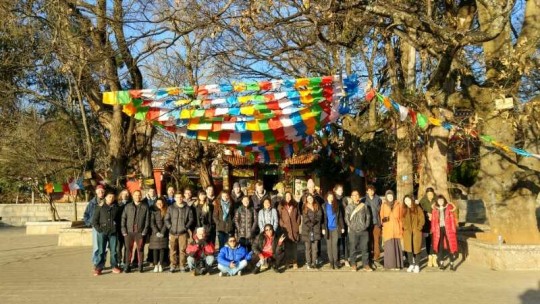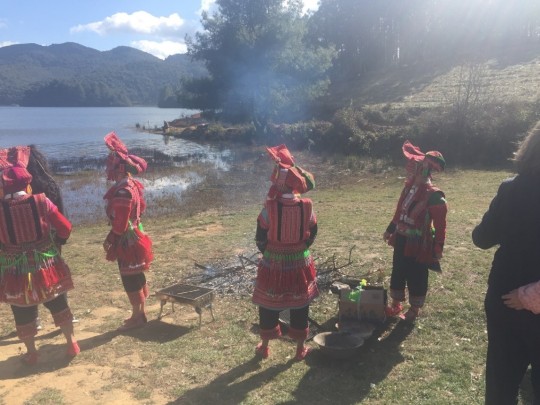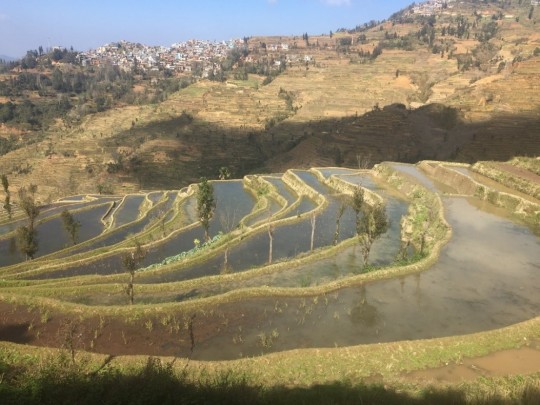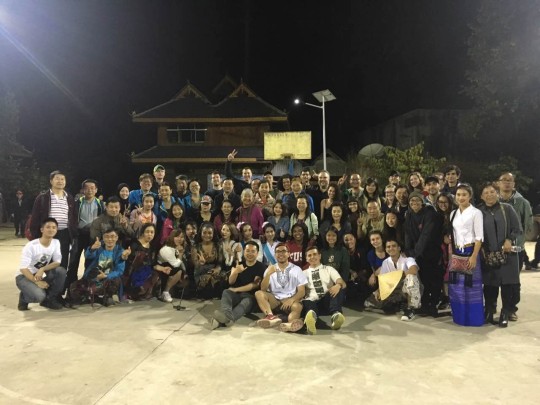#the Yi are one of the ethnic groups in the Yunnan province on China where Mothra is from!
Text

The Moth and the Lizard are married actually
#helloooooooo???????#ppl started reblogging my old mothzilla art so i needed to draw updated designs LMAO#Godzilla is Japanese! I based his outfit on Japanese street fashion#His shirt says Godzilla obviously lol#I based Godzilla's tattoo on Yakuza tattos bc in a human AU he's def Yakuza#Mothra is Chinese! I baseed her outfit on Chinese street fashion and traditional Yi fashion#the Yi are one of the ethnic groups in the Yunnan province on China where Mothra is from!#Her tattoo is traditional chinese for Queen of the Monsters#if it's written wrong uhhhh sorry LMAO I TRIED#you can see mothra's ring........ yes they are married#Golden retriever wife and black cat husband actually#except they're both in organized crime and can kill u in 20 diff ways#good for them!!!!!!#Mothra has knives in her jacket don't get it twisted#godzilla#gojira#mothra#mosura#mothzilla#godzilla x mothra#mothra x godzilla#human mothra#human godzilla#godzilla x kong#godzilla x kong: the new empire#the new empire
625 notes
·
View notes
Photo

‘It’s an open-air show about life in Lijiang long ago, using Jade Dragon Snow Mountain as a backdrop’
Last autumn, I travelled with a group of friends from Malaysia to Yunnan province in China. It is a beautiful region, significantly less polluted than cities such as Beijing and rich in mountains, lakes, rice terraces and gorges. We visited Shangri-La City, Dali, the Tiger Leaping Gorge and the Lijiang national park, where I took this shot.
We were there for a day. We spent the morning seeing the sights of the park, and in the afternoon we went to watch the Impression Lijiang show. It is an open-air theatre performance of song and dance by one of the top directors in China, Zhang Yimou (Hero, House of Flying Daggers). It depicts daily life in the area a long time ago. The actors are cast from the Naxi, Bai, Yi and other local ethnic minority tribes.
Continue reading...#designguardian
0 notes
Text
EC Tong's best photograph: a huge-scale recreation of Chinese harvests past
‘It’s an open-air show about life in Lijiang long ago, using Jade Dragon Snow Mountain as a backdrop’
Last autumn, I travelled with a group of friends from Malaysia to Yunnan province in China. It is a beautiful region, significantly less polluted than cities such as Beijing and rich in mountains, lakes, rice terraces and gorges. We visited Shangri-La City, Dali, the Tiger Leaping Gorge and the Lijiang national park, where I took this shot.
We were there for a day. We spent the morning seeing the sights of the park, and in the afternoon we went to watch the Impression Lijiang show. It is an open-air theatre performance of song and dance by one of the top directors in China, Zhang Yimou (Hero, House of Flying Daggers). It depicts daily life in the area a long time ago. The actors are cast from the Naxi, Bai, Yi and other local ethnic minority tribes.
People have asked for my permission to use it in the context of public speaking – and I always say yes.
Continue reading...
https://www.theguardian.com/artanddesign/2019/may/09/ec-tong-best-photograph-a-huge-scale-recreation-of-chinese-harvests-past
0 notes
Text
EC Tong's best photograph: a huge-scale recreation of Chinese harvests past
‘It’s an open-air show about life in Lijiang long ago, using Jade Dragon Snow Mountain as a backdrop’
Last autumn, I travelled with a group of friends from Malaysia to Yunnan province in China. It is a beautiful region, significantly less polluted than cities such as Beijing and rich in mountains, lakes, rice terraces and gorges. We visited Shangri-La City, Dali, the Tiger Leaping Gorge and the Lijiang national park, where I took this shot.
We were there for a day. We spent the morning seeing the sights of the park, and in the afternoon we went to watch the Impression Lijiang show. It is an open-air theatre performance of song and dance by one of the top directors in China, Zhang Yimou (Hero, House of Flying Daggers). It depicts daily life in the area a long time ago. The actors are cast from the Naxi, Bai, Yi and other local ethnic minority tribes.
People have asked for my permission to use it in the context of public speaking – and I always say yes.
Continue reading...
from Photography | The Guardian http://bit.ly/2WxtRC5
0 notes
Text
Words by Chris Kausman. Photos by Haute Culture.
The Akha are a large ethnic minority group dwelling predominantly in the hills of Northern Thailand. There are around 70,000 Akha people spread throughout Chiang Mai and Chiang Rai. This population is made up of three separate sub groups; the Lomi Ahka are the highest population, followed by the Ulo Akha and then the Phami Akha.
The Akha are originally from China and Tibet but they migrated to Burma, Lao and Siam (now Thailand) in the late 19th and early 20th centuries. In Yunnan province, China, where there are still considerable numbers, they are known as Hani people. They speak a ‘Loloish’ Yi language which is part of the Tibeto-Burman linguistic group and have no traditional written language.
How they live
Akha people predominately live in mountainous areas in small villages of around 30 families. Their houses are typically raised on low wooden stilts with walls constructed of bamboo and thatched roofs made from palm leaves. They are known to be excellent farmers, growing various crops of corn, rice and beans. They practice a slash and burn approach to agriculture which often damages forest eco systems and endangers native plant and animal species.
In the 1970s the Akha were prolific opium growers, traders and addicts. They reputedly suffered from the highest rate of addiction in comparison to their other hill tribe neighbours. This is probably due to the extreme poverty that affects most of the Akha. The problem resulted in much of the Akha’s land being revoked by the Thai army and the CIA clamping down on the group to put a stop to the opium trade.
Akha village in the hills of Chiang Rai, North Thailand. Photo Credit: Linda De Volder
Entrance to the Akha village North Thailand. Photo Credit: Linda De Volder
What They Believe
The Akha traditionally practice animism and ancestor worship, mixed with aspects of Buddhism. These traditions have slowly declined over time due to infiltration by missionaries and pressure to convert to Christianity. Those villages that have resisted change will carve wooden figures of a man and woman at the village gate to show the spirits that the village is the domain of humans. Socially, the Akha are egalitarian and status is afforded by both age and experience.
Their Traditional Dress
Each of the three sub groups wear a different headdress and use varying motifs and totems for their traditional dress. These incorporate sophisticated techniques of hand embroidery, reverse applique, couching and embellishments. All groups used to weave indigo dyed cotton on back strap looms to construct their clothing, but for some time now they favour a market bought polyester/cotton material.
Our textile teacher Aoh in her full handmade traditional Akha regalia
Aoh traditional dress from behind.
Aoh hand made al of her families traditional dress. The back of her jacket shows the extent of her intricate embroidery and applique skills. Modern developments include the use of plastic buttons instead of seeds or shells.
Amer is Aoh’s husband. All his traditional clothes have been handstitched by his wife.
The back of Amer’s jacket took Aoh over one year to hand embroider
A close up inspection of Amer’s jacket shows the beautiful Akha motifs stitched into the fabric.
Today Akha culture in Thailand is suffering greatly due to their assimilation into Thai society. Their traditional crafts are in danger of dying out and ceremonial customs are being lost as new generations strive to fit into the contemporary way of life seen in nearby cities. However, the Akha people are strong survivors and although many have remained relatively poor in the mountains, they still have a very strong and recognisable cultural presence overall, perhaps more so than any of the other tribal groups living in Northern Thailand.
Subsequent articles on Akha traditional dress and textiles and traditions will follow shortly.
About the Author
Chris Kausman is an Englishman who for the last 30 years he has been involved with tribal cultures from China and South East Asia, spending time with the people and purchasing costume, textiles and artefacts along the way. He has built up a close friendship with many different members of tribes and ethnic minorities and from this has accumulated much knowledge and understanding of these cultures and their artistic expression and skills. He is the founder of ‘RARE EARTH’ Tribal Art Gallery in Chiang Mai, Northern Thailand, which presents an eclectic, rare and museum quality collection of old and antique textiles, costume, silver adornments, ancient beads, and shamanistic paraphernalia.
Are you visiting Thailand? Pin this post and save it for later!
Akha Hill Tribe in Thailand
Textile Tribes of Thailand: An introduction to the Akha Ethnic Minority Words by Chris Kausman. Photos by Haute Culture. The Akha are a large ethnic minority group dwelling predominantly in the hills of Northern Thailand.
0 notes
Text
Yunnan Province & Chinese New Year - Aliyah (’18)
As my winter break came to a sudden halt, I waited and watched as the newest group of TBC students arrived on campus. I was excited and nervous to meet the incoming class of spring semester 2017 students. Although I had already been in Beijing for the past 6 months and felt extremely comfortable with the language, culture, surroundings and my own daily routine, I began to feel like a newbie again. Fresh off the 15 hour flight from America, were 27 new faces that I had never met before. It was a strangely paradoxical feeling to have the confidence of a veteran student and the awkward butterflies of a Beijing newcomer. Nonetheless, we all slowly began to get to know each other throughout our five day orientation, which actually felt like two weeks. During orientation we were given a general layout of the semester and of course our semester excursion to Yunnan. Yunnan (云南省) is a province in Southern China. We were all very excited to explore a part of China opposite Beijing and its frigid winter weather. We left for Yunnan on January 22 and returned on February 2. After just a four hour flight, we arrived in a tropics-like paradise. Light, warm air filled our lungs and brightened our smiles. We were so excited to remove our thick coats and some of our now unnecessary layers.

TBC Spring 2017
When traveling to every destination, we always split into two smaller groups, which we called Bus A and Bus B. We arrived in Yunnan province’s capital, Kunming (昆明); a beautiful tourist city with many hills, lakes, and of course tons of people. Yunnan is home to 25 of China’s 56 ethnic minorities, therefore we were able to encounter some of the many distinct cultures that make China such a beautifully diverse country. Unfortunately as we were limited with time, we only got to experience five ethnic minority cultures in person. Among these were the Yi, Hani, Dai, Naxi, and Bai Peoples.
In the Yi village we were greeted by some of the village women in their traditional, hand sewn dress. They also performed a “dragon dance” and treated us to some welcoming shots of baijiu 白酒 (rice wine liquor). Later we were further separated into groups of 5-6 people to be assigned to a homestay and a homestay mother. We relinquished ourselves of our heavy luggage and loaded into the back of a medium sized truck, in order to make our way up the mountainous hillside and dirt roads to the have dinner shore side of the infamous Yangtze River. There, we took pictures, played games and learned another traditional dance called the bug dance. We had dinner on the grass beside the river which was cooked outside over a rustic wooden flame.

Yi Women in traditional dress as they prepare dinner
In the Hani Village, we were again greeted by the village women dressed in Hani style traditional dress. They sang us a song in the Hani language and offered us a pulpy citrus drink in tiny, hand carved wooden cups. We were escorted to a village house for lunch. Several dishes adorned each table, and we were ready to dig in. We ate and chatted amongst each other and some village children while also listening to the village women sing and dance in circles. After lunch, we were escorted by a few young village children on a hike up through the village and along the handmade rice terraces. These rice terraces were unlike anything I had ever seen. The terraces carried on for miles, extending to the highest mountain and throughout the widest part of the area. The hike was fun yet challenging. It was as if we were a playing a game of who will fall into the rice terraces first. Despite our tiny fears, we reached our destination. The views were magical and the air was so fresh and crisp.

Rice Terraces in Hani Village
On our way to the Dai Village, we stopped in city called Jinhong (金红) where we celebrated Chinese New Year. Chinese New Year is the most celebrated holiday in China. All companies, schools, and most restaurants close at least two weeks before Chinese New Year. This is because most people travel back to their home provinces in order to celebrate the New Year with their families. Even though in China the calendar year is now based off the Gregorian calendar, as in the West, Chinese people still recognize many aspects of their traditional lunar calendar, which is why Chinese New Year is never on the first of January. The Chinese even have separate zodiac signs based on one’s lunar calendar birthday. There are 12 animals that are included in the Chinese zodiac. As the clock clicked down, fireworks went off throughout the city and continued for almost two weeks after the New Year. It’s safe to safe that Chinese people love fireworks as a celebratory gadget.

Yunnan Gadgets
Now, at the Dai Village the weather was just shy of 80 degrees. Unlike the other two villages we had previously visited, the Dai village was very touristy and had tons of visitors. We explored the streets, purchasing and trying on customary attire and ancient Chinese knickknacks. Once the village “closed” the crowds disappeared, and we were allowed to stay as overnight guests. Before bed, we attended a performance on the basketball court lit by street lamps. Dai villagers, other visitors, and of course all the Tbc students and staff, spent the night enjoying each other’s company and sharing and embracing one another’s culture. Before the night ended, we performed the cupid shuffle, the “whip & nae nae” and a poorly executed soul train line.

TBC Students with Dai Villagers and other tourists
Then we made our way to a city called Lijiang (丽江) where the Naxi Village was. Here we had a social dinner, and explored the village streets. There were animals roaming every street and around every corner. As in the last village, after dinner there were more performances. The Naxi people sang in Chinese, English and Dongba, their native language. Two men even performed a fire dance which was insane to watch. They rubbed fire on their skin, clothes, hair, and even put flaming sticks down their pants for a few laughs. Four other TBC students and I sang the infamous “Aint No Mountain High Enough”. Lastly, four other TBC students from Columbia rapped a reggaetone song and then even performed a Columbian dance called choque to the fast paced beat.

TBC students with Naxi woman
Our final village was that of the Bai people. The Bai people are Muslim. It was cool to see how their Islamic practices and Chinese culture combined so gracefully. I liked this because it shows how many different kinds of people there are in the world. In the U.S, Islam is solely associated with Middle Eastern peoples, even though it is such a wide spread religion, touching all continents across the globe. They prepared us lunch, which was a combination of Southern Chinese cooking with a clear Islamic influence. Then we explored the village and made our way to the village mosque. This mosque was different than some of the mosques I saw in Xinjiang Province. This mosque had less of a Middle Eastern architectural influence and remained mostly Chinese in architecture and overall structure. Afterwards, some friends and I, accompanied by an older Chinese man, climbed the bell tower and he helped us ring the bell which could be heard throughout the village.

View of Bai Village from Mosque Bell Tower
Finally, we made our way home as we completed our 12 day itinerary with a return flight back to Beijing. After just 12 days, the same group which had previously been total strangers to each other were all hanging out and chatting together as if we had all been friends for years. #FriendshipsHappenInChina

“Bus B”
#fairfieldabroad#studyabroadchina#thebeijingcenter#explorechina#studyabroad#livelearngrowabroad#wanderlust
0 notes